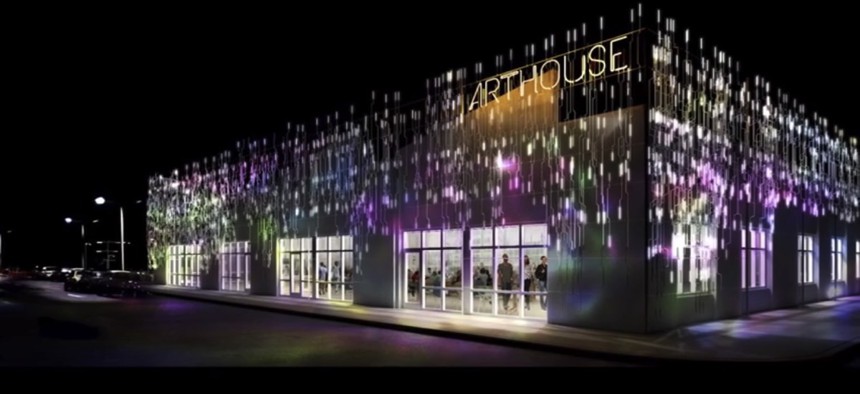Can Public Art Solve Pressing Urban Issues?

ArtHouse: A Social Kitchen

Connecting state and local government leaders
Mayors are using an unusual tool to address issues like environmental stewardship and public safety: public art.
There are no easy solutions for the litany of thorny issues facing American cities. What can be done about economic inequality or the fragmentation of public spaces? These are not questions that lead to simple answers.
Amid increasing socio-economic segregation in urban centers, mayors are turning to an unorthodox tool to bring communities together and tackle multi-faceted problems. That tool is art.
In June of 2015, the Bloomberg Philanthropies Public Art Challenge selected four places to receive up to $1 million over the course of two years in support of innovative collaborations between mayors and artists.
Upstate New York; Gary, Indiana; Los Angeles; and Spartanburg, South Carolina all embarked on projects to address neighborhood revitalization, public safety, promoting urban connections, and environmental stewardship—all through the arts.
Dramatic economic changes in post-industrial Albany, Schenectady and Troy, New York have left the region rife with entire blocks of vacant buildings.
So these three cities—along with artist Adam Frelin, architect Barbara Nelson and more than 25 community and private sector partners—chose to make something out those empty structures. The result is “Breathing Lights,” an attempt to make it impossible to ignore these overlooked homes and give them new life.
Like cities in Upstate New York, Gary, Indiana’s booming manufacturing era seemed firmly behind it. But the memory of that former vibrancy is part of what inspired “ArtHouse: A Social Kitchen.” The project was conceived in partnership with Theaster Gates, an artist based in Chicago. Based around a single building, the initiative seeks to build community around the sharing of ideas and food.
As one artist involved in Los Angeles’ project bluntly puts it, “[W]ater is on people’s minds because we’re afraid we’re not going to have enough of it.”
So the question is, can art help Los Angeles develop a better relationship with its stormwater? That’s the hope behind “Current:LA Water,” a multi-disciplinary project that’s meant to bring communities together to talk about how they value and protect this crucial resource.
Spartanburg, a city “grounded in tradition,” challenged itself to use the arts to address a very serious topic: public safety. Nine installations around the city will make use of light to illuminate spaces and communities. While the message of the art is a powerful one, organizers of “Seeing Spartanburg in a New Light” say it’s the relationships that have been built by the team working in and among these neighborhoods that will endure.
Quinn Libson writes for Government Executive’s Route Fifty.

NEXT STORY: When virtual and augmented reality meets government analytics





